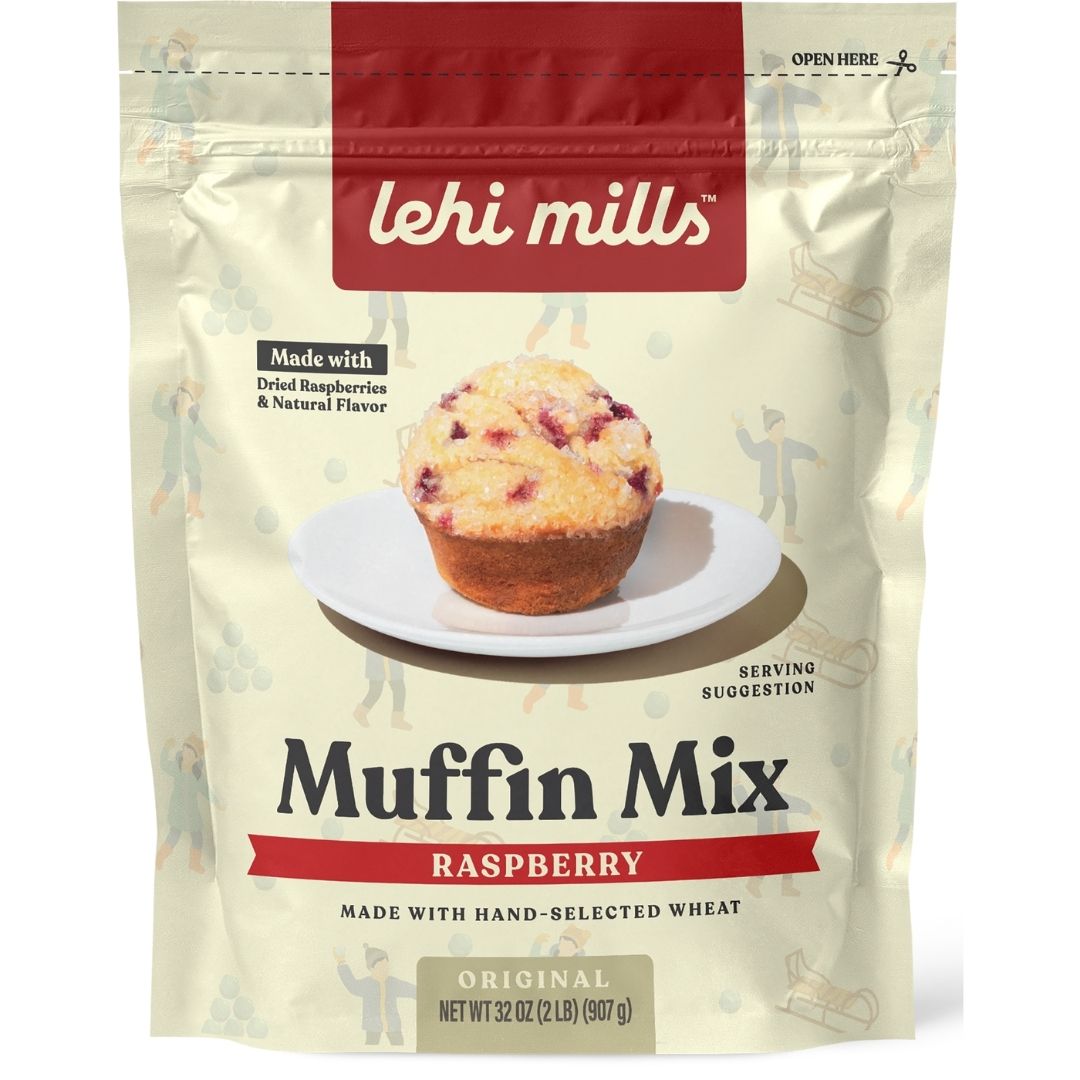Homemade Pie Crust Tips and Tricks
There's nothing quite like a homemade pie with a flaky, buttery crust that melts in your mouth and it's even better when you know all the homemade pie crust tips and tricks.
While pie fillings may vary from sweet to savory, the foundation of a great pie is undoubtedly the crust. Making a homemade pie crust can be intimidating for some, but with a few expert tips and the right ingredients, you'll be well on your way to mastering this culinary art.
In this blog post, we'll explore some essential tips and tricks to help you achieve that perfect pie crust, and we'll also highlight the benefits of using Lehi Mills Peacock All Purpose Flour, a quality ingredient that can elevate your pie-making game.

When it comes to pie crusts, the flour you use plays a pivotal role. The quality and type of flour can significantly impact the texture and flavor of your crust.
For a flaky, tender, and delicious pie crust, consider using Lehi Mills Peacock All-Purpose Flour. This finely milled flour is crafted to have a consistent texture, making it easier to work with. It's fine consistency and protein content make it ideal for creating that sought-after flakiness in your pie crusts.
Now that we've covered the importance of choosing the right high-quality flour, let's explore some additional tips and tricks to help you perfect your homemade pie crust.
Additional Pie Crust Tips and Tricks:
- Keep Everything Cold: One of the most critical aspects of making a perfect pie crust is keeping your ingredients cold. This includes cold butter or shortening, cold water, and even a cold work surface. Chilled fat ensures that it doesn't melt too quickly when the crust bakes, creating those desirable pockets of air that make a crust flaky. Before starting, chill your butter or shortening in the freezer for about 15 minutes. Use ice water for your dough as well. Chilling the dough in the refrigerator before rolling it out will also help maintain the flakiness.
- Handle with Care: When mixing the pie dough, remember that less is more. Overworking the dough can lead to a tough crust rather than a tender, flaky one. Mix the dough until the ingredients just come together, and visible chunks of butter or shortening are still present. These chunks of fat will melt during baking, creating the desired flakiness.
- Rest the Dough: After mixing the dough, shape it into a disk, wrap it in plastic wrap, and refrigerate it for at least 30 minutes. Resting the dough allows the gluten to relax, making it easier to roll out and preventing shrinkage during baking. You can even prepare your pie crust a day in advance and leave it in the refrigerator overnight for added convenience.
- Roll It Out Right: When rolling out your pie crust, use a lightly floured surface and a rolling pin. Use light, even pressure to avoid compressing the dough. Roll from the center outward, turning the dough periodically to maintain an even thickness. Roll it to the desired size for your pie pan, usually about 1 to 2 inches larger in diameter to ensure a generous overhang.

5. Handle with Love: When transferring the rolled-out dough to the pie pan, do so gently to prevent stretching or tearing. Pat the dough into the pan, ensuring it fits snugly. Trim any excess dough, leaving about 1/2 inch of overhang to create a beautiful, crimped edge.
- Blind Baking: For some pie recipes, you may need to blind bake (pre-bake) the crust before adding the filling. To do this, line the crust with parchment paper and fill it with pie weights or dried beans. Bake the crust at a slightly lower temperature before adding the filling.
- Dock the Crust: Before adding your filling, dock the pie crust by pricking it with a fork. This prevents the crust from puffing up during baking.
- Flute the Edges: Crimping or fluting the edges of your pie crust not only makes it look professional but also helps seal the pie, keeping the filling in place. You can use your fingers, a fork, or even decorative pie crust cutters for a creative finish.
- Patience is Key: Once your pie is out of the oven, give it time to cool and set. Cutting into a piping hot pie will cause the filling to ooze out, and your pie may not hold its shape. Waiting for at least an hour is ideal.
- Practice Makes Perfect: Don't be discouraged if your first pie crust doesn't turn out perfectly. Like any culinary skill, making the perfect pie crust takes practice. Keep trying, and you'll improve with each attempt.
Making a homemade pie crust doesn't have to be daunting. With the right techniques, quality ingredients like Lehi Mills Peacock All Purpose Flour, and a little practice, you can create the perfect pie crust that will have your family and friends coming back for seconds.
We love to get creative in the kitchen and we hope you'll join us. If you decide to try our tips and recipes, we want to see it! Be sure to post a photo on your social media pages, tagging @lehimills, and using the hashtag #LehiMillsFamily or #HarvestToHome for the chance to be featured on our page as well. If you're not already following us on Instagram, Facebook or our YouTube channel, be sure to start to see all our latest recipes and ways to use your favorite Lehi Mills products.











